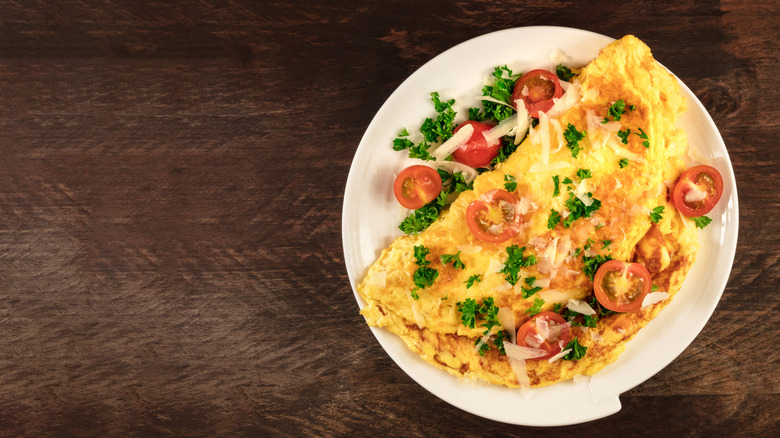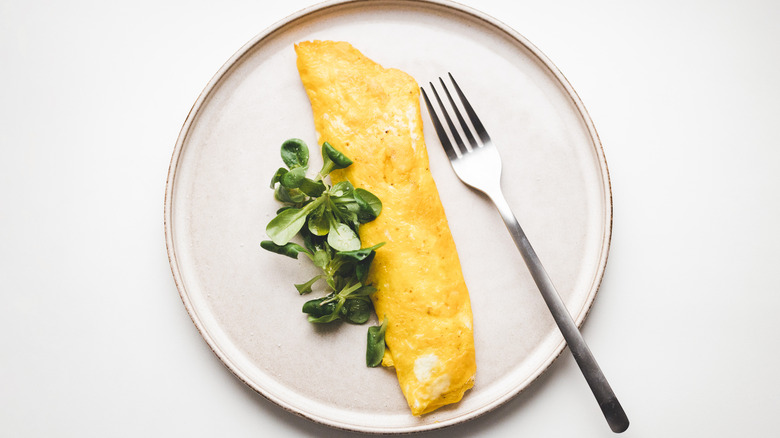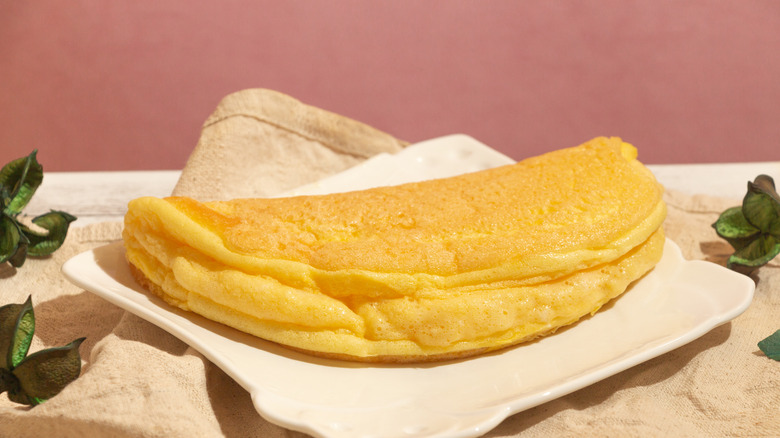What Are The 3 Types Of Omelets And How Are They Different?
Few breakfast dishes are more beloved than the classic omelet. Though there exist a whole lot of egg dishes across the world, it's possible the omelet is the king of them all — a beautiful mix of eggs and whatever other ingredients you want to throw in there. It's one of the most versatile dishes in the world.
However, not all omelets are the same, and not just in terms of their ingredients. You've probably seen a lot of variety in omelets, because the three main types of omelets — French, American, and soufflé — look virtually nothing alike. They're not cooked the same way, either. The only similarity the three omelets share is that they're all egg dishes into which you fold other ingredients. (Well, that and the fact they're all absolutely delicious.) And while American omelets are often pooh-poohed by high-end chefs who were all taught how to make French omelettes in culinary school, they're certainly not any lesser than their European counterparts.
French and American omelets are the most common versions
If you're a home cook and you've made omelets, most likely you crafted an American omelet. It's a pretty simple creation: You just beat some eggs, pour them into a hot pan on medium-low, and then let them set until the bottom becomes lightly golden brown. Then you add in whatever fillings you'd like on one-half of the pan. This can be basically anything, as an American omelet is wildly versatile, with styles such as the Denver omelet and the California omelet. Finally, you fold the unfilled side up and over, and you're done.
French omelettes, meanwhile, require a lot more technique. They require medium to medium-low heat, and you're supposed to gently stir them clockwise while you prepare them. Then, when your eggs are nearly set, you take the pan off the heat and tilt it, allowing the eggs to fall to the opposite side of the pan. The final step is the most visually distinctive, as a French omelette is folded into thirds so it looks a little like a rolled tortilla. All this extra work accomplishes two things: It allows the eggs to gain more fluffiness, and it results in an omelet without any browning. Though the classic French omelette doesn't have much in the way of fillings, you can still add whatever you like.
Soufflé omelets require more initial work
While French and American omelets are probably the two best-known types, they're not the only ones. There's a third classic omelet style: the soufflé omelet. Soufflé omelets are the most complicated to make of all three classic varieties (at least at the start). Unlike the American and French versions, a soufflé omelet doesn't simply involve eggs scrambled in a bowl. Instead, you separate the egg whites and yolks before beating them. This is particularly important in the case of the whites, which you whip until they form stiff peaks like a meringue. Then you recombine the whites and yolks, pour them into a pan, and allow them to brown, creating an omelet that puffs up — hence, a soufflé omelet.
One last note: While some people consider frittata recipes to be Italian omelets, this isn't correct. A frittata is more like a quiche without a crust, in that you mix the ingredients with the eggs (rather than fold them in, as is the case with the true omelets). Additionally, frittatas are usually baked.
But as far as the three types of true omelets go, there's no wrong answer here — each is delicious in its own way.


